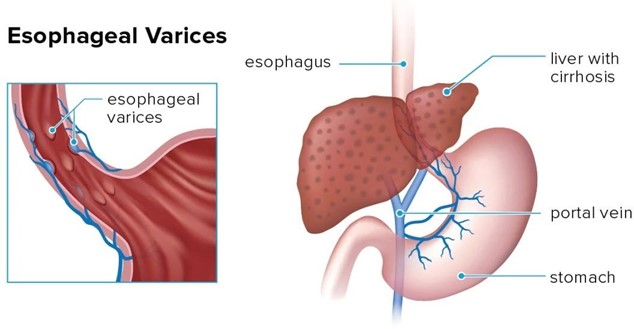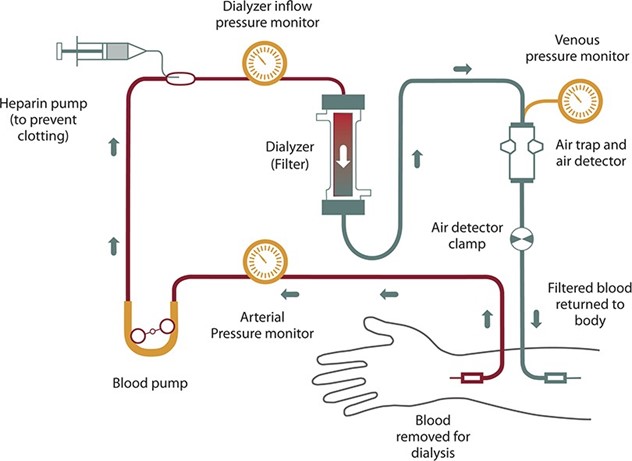A nurse in the emergency room is caring for a client who presents with manifestations that indicate a myocardial infarction. Which of the following prescriptions should the nurse take first?
Attach the leads for a 12-lead ECG.
Initiate oxygen therapy.
Insert the IV catheter.
Obtain a blood sample.
The Correct Answer is B
The correct answer is: B. Initiate oxygen therapy.
Choice A reason:
Attaching the leads for a 12-lead ECG is crucial for diagnosing a myocardial infarction. However, it is not the first priority. Ensuring the patient receives adequate oxygen is more critical to prevent further myocardial damage. The ECG can be performed immediately after oxygen therapy is initiated to confirm the diagnosis and guide further treatment.
Choice B reason:
Initiating oxygen therapy is the first priority because it ensures that the heart muscle receives adequate oxygen, which is essential to prevent further damage during a myocardial infarction. Oxygen therapy helps to maintain tissue oxygenation and can reduce the extent of myocardial injury. This immediate intervention is vital to stabilize the patient and improve outcomes.
Choice C reason:
Inserting the IV catheter is important for administering medications and fluids. However, it is not the first step. Oxygen therapy takes precedence to ensure the heart and other vital organs receive sufficient oxygen. Once oxygen is administered, IV access can be established to facilitate further treatment.
Choice D reason:
Obtaining a blood sample is necessary for confirming the diagnosis and assessing cardiac markers. However, it is not the immediate priority. Ensuring the patient is oxygenated is more urgent to prevent further myocardial damage. Blood samples can be drawn after oxygen therapy is initiated.
Nursing Test Bank
Naxlex Comprehensive Predictor Exams
Related Questions
Correct Answer is A
Explanation
Choice A: Provide frequent oral and nares care is the correct action for the nurse to take. Oral and nares care can help prevent infection, dryness, and irritation of the mucous membranes, which can be damaged by the pressure and friction of the tube. The nurse should also monitor the tube position, secure it with tape, and keep scissors at the bedside in case of emergency deflation.
Choice B: Keep the client in a supine position is not the correct action for the nurse to take. The supine position can increase the risk of aspiration, regurgitation, and gastric distension, which can worsen the bleeding and compromise the airway. The nurse should elevate the head of the bed to at least 30 degrees and use a semi-Fowler's or high-Fowler's position.
Choice C: Ambulating the client four times per day is not the correct action for the nurse to take. Ambulation can increase abdominal pressure and dislodge the tube, which can cause bleeding and perforation. The nurse should keep the client on bed rest and use passive range-of-motion exercises to prevent complications such as thromboembolism and muscle atrophy.
Choice D: Encouraging the client to consume clear liquids is not the correct action for the nurse to take. Clear liquids can increase gastric volume and acidity, which can aggravate the bleeding and interfere with hemostasis. The nurse should maintain a nothing-by-mouth status and provide intravenous fluids and nutrition as prescribed.

Correct Answer is B
Explanation
Choice a) is incorrect because calcium levels are not directly affected by hemodialysis. Calcium is a mineral that is important for bone health, blood clotting, and muscle contraction. Hemodialysis does not remove calcium from the blood, but it may cause low calcium levels if the dialysate fluid has a lower concentration of calcium than the blood.
Choice b) is correct because potassium levels are decreased by hemodialysis. Potassium is an electrolyte that is essential for nerve and muscle function, especially the heart. Hemodialysis removes excess potassium from the blood, which can build up in people with kidney failure and cause irregular heartbeats, muscle weakness, or even cardiac arrest.
Choice c) is incorrect because protein levels are not decreased by hemodialysis. Protein is a macromolecule that is composed of amino acids and performs various functions in the body, such as building and repairing tissues, transporting substances, and regulating processes. Hemodialysis does not remove protein from the blood, but it may cause low protein levels if the client has a poor diet or loses protein through other means, such as urine or wounds.
Choice d) is incorrect because RBC count is not decreased by hemodialysis. RBCs are red blood cells that carry oxygen throughout the body. Hemodialysis does not remove RBCs from the blood, but it may cause low RBC count if the client has anemia, which is a common complication of kidney failure. Anemia can be caused by reduced production of erythropoietin (a hormone that stimulates RBC production), iron deficiency, or blood loss.

Whether you are a student looking to ace your exams or a practicing nurse seeking to enhance your expertise , our nursing education contents will empower you with the confidence and competence to make a difference in the lives of patients and become a respected leader in the healthcare field.
Visit Naxlex, invest in your future and unlock endless possibilities with our unparalleled nursing education contents today
Report Wrong Answer on the Current Question
Do you disagree with the answer? If yes, what is your expected answer? Explain.
Kindly be descriptive with the issue you are facing.
